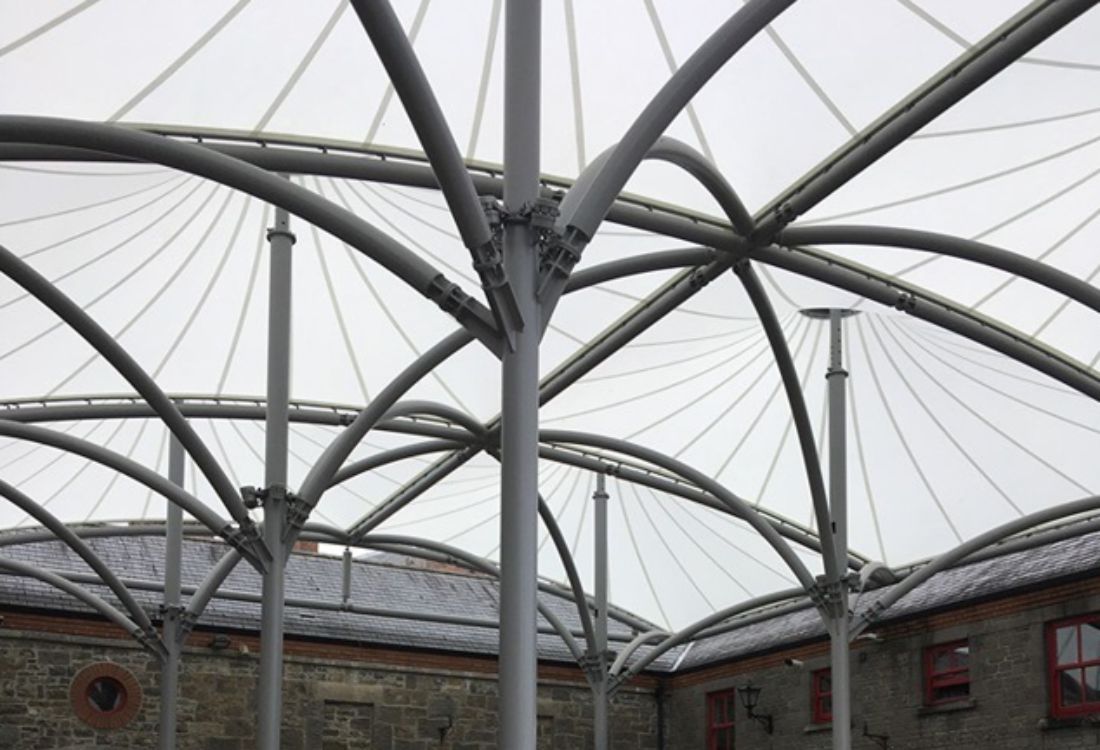
Precision In Design: Patterning Tensile Fabric Structures
Tensile structures are a symbol of architectural innovation and artistic expression. Characterised by their lightweight and fluid forms, these structures rely heavily on the precision of their patterning process. Patterning is both a technical necessity and an art form that blends architectural vision, material science, and engineering expertise.
In this article, we will explain patterning in tensile fabric engineering and the key considerations involved in the process.
What Is Patterning?
Patterning is the process of designing the division of structural fabric into panels. This involves flattening the doubly-curved shapes and compensating the panels – that is, reducing them in size to introduce the desired pre-stress level. This meticulous process is essential to the success of tensile fabric structures, as it ensures that the final construction meets aesthetic standards as well as its loading and serviceability requirements.
Meeting The Architect’s Vision
The architectural vision plays a key role in patterning. The fabric is divided by visible seam lines, which are determined based on architectural intent and aesthetic preferences, together with functional and serviceability reasons. These seam lines must be set out to be geodesic - following the shortest path across a curved surface. By careful planning and execution of these lines, the designer's vision can become a reality.
The Importance Of Compensation
Compensation, an essential aspect of patterning, involves reducing the fabric panel size in a precise way to achieve the desired fabric form once installed. When the panels are installed and 'pulled' into position, the extension of the fabric creates the correct shape and induces the optimum level of pre-stress. The precision in this phase determines whether the fabric structure will maintain its intended shape and strength over time, and is a crucial step because it is where the theoretical design becomes physical reality.
Choosing The Right Materials
The choice of fabric material significantly influences the design and functionality of tensile structures. Factors such as translucency, strength, and durability are vital in material selection. Bi-axial testing of the material is critical to understanding how it deflects (extends) under load and helps to inform its compensation and patterning process, to ensure that the material behaves as expected when subjected to real-world conditions.
Finalising The Construction Details
Finally, construction details must be meticulously considered during the patterning process. This includes overlapping and welding panels, creating pockets for cables and keder edges, and adding patch reinforcements. These details may seem minor, but they are essential for tensile fabric structures' integrity and longevity.
Contact Us To Find Out More
For more information about our tensile structure design services, please email Neil Holloway at nholloway@fentonholloway.com.
/Neil-Holloway-Tensile-Structures-Long.webp)

.png?width=365&height=215&name=Brochure%20CTA%20(1).png)